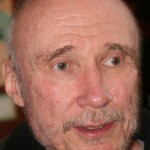
Photo by Careena Chase
I was recently hiking a rugged mountain trail when I realized that a man was approaching from behind me. I realized this when he was still more than half a mile away, since the individual in question had obviously taken the advice to use his “outdoor voice” far too literally.
I prefer to think that he was not completely inconsiderate, but instead a person who had never had the chance to get more in tune with nature and see himself (and his voice) as part of her natural soundscape.
Much as the bright lights of the city obscure the flickering glow of stars, so, too, our modern sounds drown into oblivion the delicious lilt of nature’s own subtler soundtrack.
Double-paned windows, while keeping us warm, isolate us from the sounds of nature. Leaf blowers, cars, jets and other engines of their ilk confound our ears and not so subtly assault our souls. So we compensate, by becoming ever louder ourselves, and listening even less to our surroundings.
The dance of sound through the wilderness tells a story millions of years old — the insistent mating calls of songbirds, the yip-yowling midnight rave of a coyote pack, a rolling wave of wind sweeping through the pines. Each of these sounds has a context, a “backstory,” that long ago we used to know how to read.
Fortunately, these stories haven’t been lost. Listening to nature is a skill that can be regained. Here’s some play-centered suggestions to help you and any little ones you have in your life get back “in tune” with your natural soundtrack:
1. Take a bird (sound) bath: Ever have trouble telling the difference between a raven and a crow? Listen to their individual calls and there’ll be no doubt.
Do a little research and find out what the common local birds are. The U.S. Forest Service Ranger Station usually can point you to some good birding resources.
Recordings of bird calls are generally available on Internet birding sites (or even in your smartphone App Store). Choose several for you (and any little tagalongs) to identify. Then take a walk and have at it.
2. Silence is a soundscape: Vegetation softens sound. Millions of little pine needles disperse sound waves in a jumble of directions, softening the edges of close sounds and deadening them over a distance. Hard, flatter surfaces such as rock will reflect the sound back more uniformly, keeping it crisper and more intact. (Anybody ever heard rock climbers on Tahquitz yelling to each other all the way in downtown Idyllwild?) Knowing this, what is the quietest space(s) you think you can find on our mountain? What would be the loudest?
3. All sounds have their place: Record the sound of your feet on the trail in different (unique) spots for segments of 10 to 20 seconds. Play them back.
Walking on gravel has a distinctly different sound than sandy soil, rock or pine duff. Who in your group can guess where you were at for each recording?
4. Can you be as quiet as a deer? There are a lot of ways to train children that their “outdoor voices” (and movements) shouldn’t necessarily be loud ones.
One fun game is using a decibel meter (available at music stores or for free on your smartphone App Store). Try moving through the terrain and measuring the sounds you make.
Who in your group can talk the most quietly and still be understood? Who can move the most quietly? How fast or slow do you have to move? Are you louder in hard-soled boots, soft shoes or even barefoot?
This exercise helps kids (and adults) truly understand why choosing each step carefully is a natural part of a wild animal’s life. Turn it into a game and reward points for the quietest traverse of a particular terrain.
So next time you’re outdoors, stop for a moment to sit on a rock and stretch your ears out to hear. Nature’s soundscape is a richly textured story, if only you care to listen.










